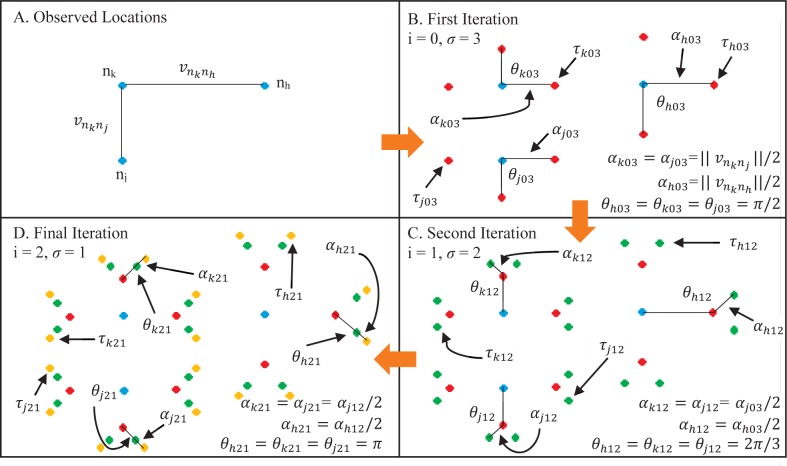Figure 1.
A step-by-step visual representation of the algorithm in Box 1 on a network of K = 3 observed discrete sampling locations with τ = 3. A) The three observed sampling locations (nh, nj, nk) are shown as blue circles and the corresponding shortest vectors are and . B) Each observed location is given σ = 3 nodes (τh03, τj03, τk03) shown as red circles. These nodes are distributed by (3) and (4). C) Each red node is given σ = 2 nodes (τh12, τj12, τk12) shown as green circles, distributed by (3) and (5). D) Each green circle is given σ = 1 node, (τ h21, τj21, τk21) shown as yellow circles, distributed by (3) and (5). At this point there are no new nodes to add and the algorithm exits. There are ϕ(3, 3) = 48 total nodes in the new set by (6) and (7). The distances and angles between nodes are shown by αxyz and θxyz, respectively, where x is the node (h, j, k), y is the ith step in the iteration, and z is the count of σ nodes added during the step. Note that all α and θ values are equal for each node for each step in the algorithm.

